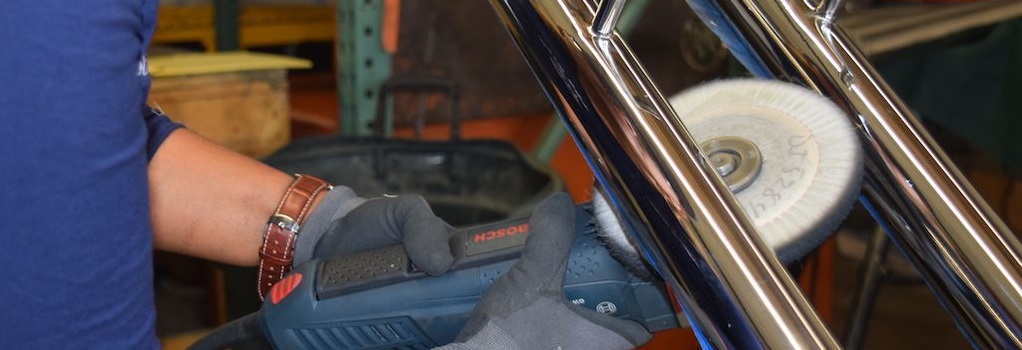
How To Polish Stainless Steel With 7 Proven Techniques
Stainless steel is a universal term referring to a various steel type. Such as all other types of steel, stainless steel is made mainly from iron and carbon in a two-step operation. What makes stainless steel unique is the addition of chromium (Cr) and other alloying elements like nickel (Ni) to build a corrosion-resistant metal.
Steel corrodes due to the iron, the metal used to make steel. It appears out there in combination with other elements. When iron is artificially handled into a pure form to create steel, it causes an unstable state and will quickly recombine with oxygen.
When chromium has added to steel, it made chromium oxide, which performs as a guarding surface to reduce air and moisture from causing rust, as in the case of ordinary steel. Chromium has added in the ranging between 10.5 to 30%, relying on the application or environment in which the stainless steel will use.
Follow the lines below and learn in which all appropriate ways you can polish stainless-steel item.
How to Polish Stainless Steel
Most people think that stainless steel is unbreakable metal, resistant to corrosion and rust. Although more resistant than regular steel, stainless steel is not stain-proof. It only stains rarely than ordinary steel.
You have noticed that stainless-steel objects in your surroundings, especially those in extended contact with a heat source, starting to seem worn. Fortunately, there are several different techniques you can apply on how to polish the stainless steel and back it to its previous shape and glance.
Polishing Techniques
Relying on the type of stainless steel, you can polish with various tools and solutions. For example, you can operate with wheels, water, glass cleaner, vinegar, baking soda, olive oil, non-waxy and specialized cleaners.
Stainless Steel Polishing Using Rotary Tool
Rotary tools and polishing accessories include abrasive wheels, points, cones (mostly rubber-bonded abrasives), and brushes that can be used on stainless steel, aluminum, brass, silver, gold, and plastics.

For the wanted result use small wheel or large wheel made from silicone carbide, impregnated with premium grade chemical rubber.
Wheels, point, and cones are easy to use, no matter the purpose of your task.
- Choose the desired shape of abrasives. For a flat surface, it is recommended to use wheels, for a corner and hard to reach areas use cones and points.
- Another thing to consider is grit texture. Coarse grit is most aggressive. For polishing stainless steel best results is possible to achieve with fine or extra fine grit.
- After you have decide on abrasive shape and grit mount it on rotary tools using mandrel. Firm tight to Dremel or lathe and choose tool’s appropriate speed. The great thing about polishing wheels and points is they won’t ruin material surface since they are rubber bonded.
- Now slowly run tool across the surface you want to polish. If you use bench lathe with large polishing whee,l hold workpiece against the wheel. In just a few steps and several seconds, you’ll polish stainless-steel and achieve a mirror finish.
IMPORTANT: Every time you use rotary tool use safety gear like a face mask, protection eyeglasses and gloves to protect yourself from injuries.
Despite their size, shape or grit texture rubberized abrasives made of silicone carbide (SiC) are perfect to:
- Clean and polish metal accessories and fittings. You can optionally use oil or water as a lubricant;
- Great for cleaning and fine polishing hard to reach areas,
- Remove paint from the metal surface,
- Polish aluminum and silverware,
- Wheels are adequately for polishing away fatigue lines, scratches, and other surface defects.
Perfect for work on stainless-steel items, dies, molds, instruments, control mechanisms, electronic parts, jewelry polishing, aerospace components, light castings, models, and super sensitive scientific devices. Applied by professional jewelers, gunsmiths, dental technician, knifemakers, lapidaries, bladesmiths, silversmiths, etc.
Olive Oil Usage
Using olive oil for steel polishing is a less aggressive method that can remove only light rusty spots.
Open the olive oil bottle and spill some oil on the cloth or dip a cloth in oil for several seconds.
Before you begin to polish stainless steel, cover the whole surface of the workpiece with olive oil. Same stands for grooves and hard to reach corners.
The method is pretty simple, indeed. All you need to do is to brush workpiece applying substantial pressure with a cloth until you notice a light shine over the surface.
Use clean cloth or paper towel to eliminate excess liquid. If the oil stays on the metal, it can dull it instead of buff it. Apply a clean, soft cloth until thoroughly dry.
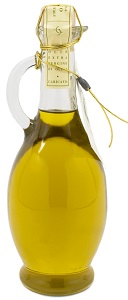
Since you have finished brushing down the material, barely touch it. If it’s still oily, carry on sweeping. Apply the clean cloth to take off the fingerprints.
Vinegar Buff
Pick the right vinegar since particular kinds of vinegar can run better than others. White and cider vinegar runs equivalently on stainless steel, although cider vinegar makes a more pleasant scent. Cleaning vinegar is excellent for tough dirt spot due to its sharp acidity. If your object is highly oxidized, choose cleaning vinegar.
Look at the direction of the grain. Such as wood, stainless steel has a grain that will go vertically or horizontally. Brushing the item down in the course of the grain will aid you to see the small grooves where dirt can get collected.
Load the vinegar in a spray bottle. Then, spray the vinegar across the stainless steel until the object has lightly coated in it. If you don’t have a spray bottle, you can dampen a cloth in vinegar and equally wipe the item.
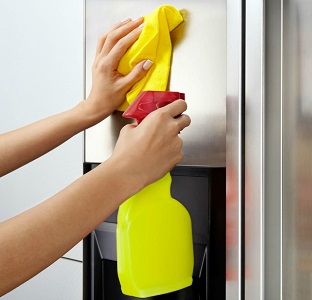
For light buffing, water down vinegar (half cup of vinegar for each quarter of hot water).
Applying a smooth cloth or paper towel, rub the vinegar off in the grain course. It will remove rubbish from the object and restore its sheen. Don’t forget to brush in the grain direction. You should avoid vinegar remains trapped in the grooves and make your item to lose color over time.
Non-Waxy Style
Purchasea non-waxy steel polish. Waxy polishes leave behind a thin coating, which can progressively dull your item during the time, that is why you need a non-waxy polish.
Pick an oil-based cleaner or water-based cleaner. Water-based cleaners won’t remove stains or fingerprints from an object. For the best buff, take an oil-based cleaner. Water-based cleaners are better for the environment, typically less flammable and less harmful. Weigh which one is more suitable for your task.
Use a well-ventilated area to polish stainless steel. Specialized cleaners can produce vapors that are dangerous to breathe in small spaces. Rub your item near a window or outside to avoid dizziness. Open windows and doors before you start cleaning.
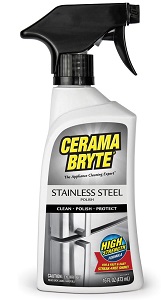
Use rubber gloves when you spray to avoid contact with your hands. Rub the item down in the course of the grain. Use a dry cloth to brush down your object. After you have finished brushing down the item, it is ready for use.
Water Method
On some occasions, all you need is some hot water to clean the dullness out of stainless-steel pieces. Use a cloth that’s been slightly wet with warm water and wipe off the material.
Don’t wait to water beads dry, clean the metal with a clean, dry cloth. A chamois cloth or shammy leather will fit suitably for this task. It’ll absorb the water straight away and polishing the stainless-steel surface at the same time.
Glass Cleaner Technique
This technique simplifies the work of wiping old water stains and built-up dirt that has collected on your stainless steel. Still, as soon as the cleaning has done, it’s necessary to rinse the material with hot water and dry it entirely to eliminate any chemicals left behind. Drying it expeditiously is a must to prevent the creation of new water stains.
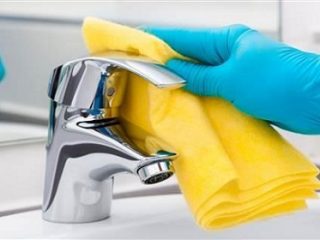
Baking Soda Technique
Like vinegar, baking soda is also a useful kitchen article that has high cleaning potential. In a clean dish, mix baking soda with hot water until you create a paste. Take a clean cloth to scrub the paste on the entirely stainless-steel material and then rinse it with warm water and dry it with a clean towel.
Specialized Cleaners Usage
In your local store you will notice certain products only for cleaning and polishing stainless steel. These are suitable if the metal you need to clean is highly tarnished or scratched.
It’s crucial to know that not all of these products are safe for use on materials that come into touch with food. Those that provide food safe label. Besides that, you should only use these products in an adequately-ventilated area, and it’s necessary to wear a mask. Before using the cleaner on the entire item, try applying it in an inconspicuous place to ensure it doesn’t cause any discoloration of the stainless steel.
